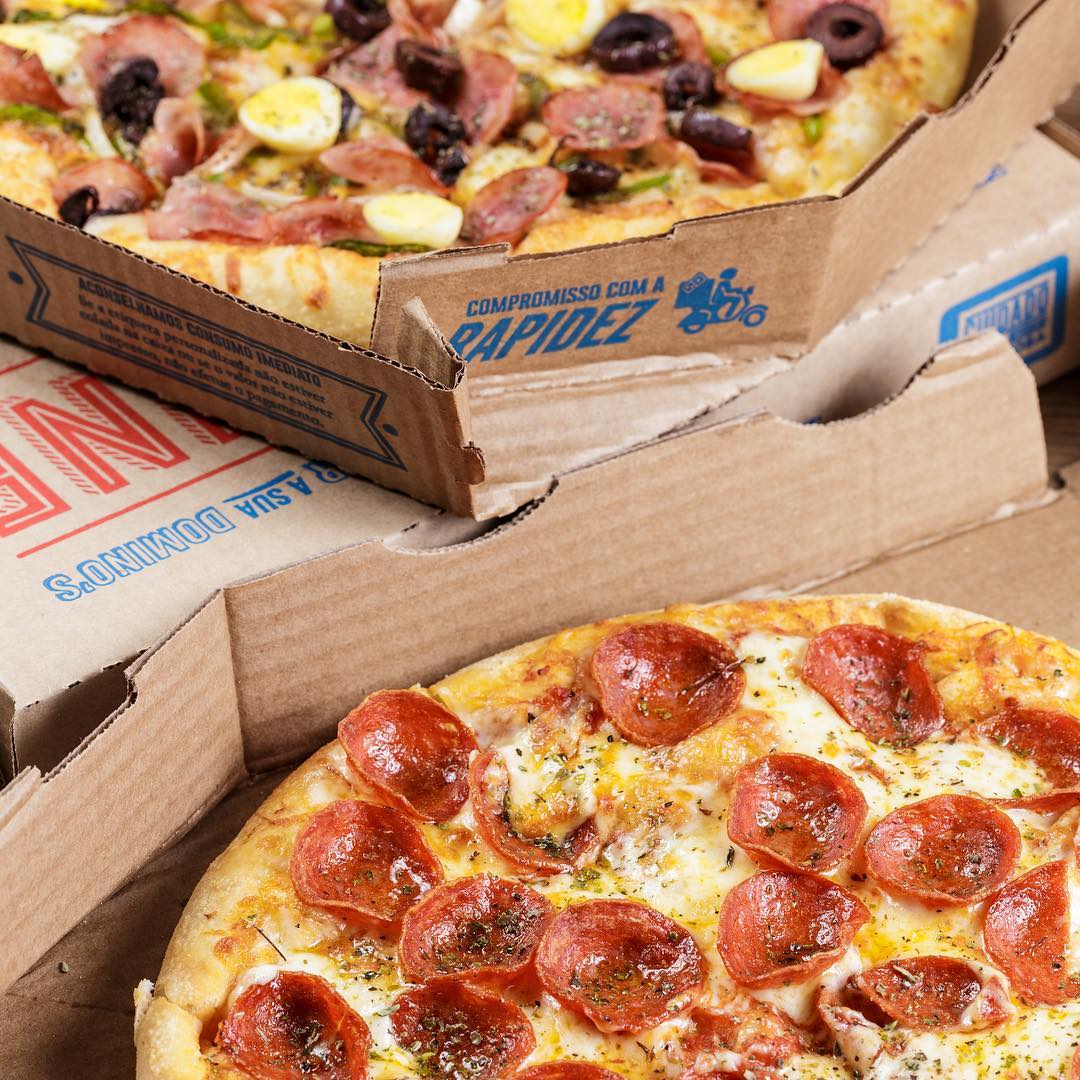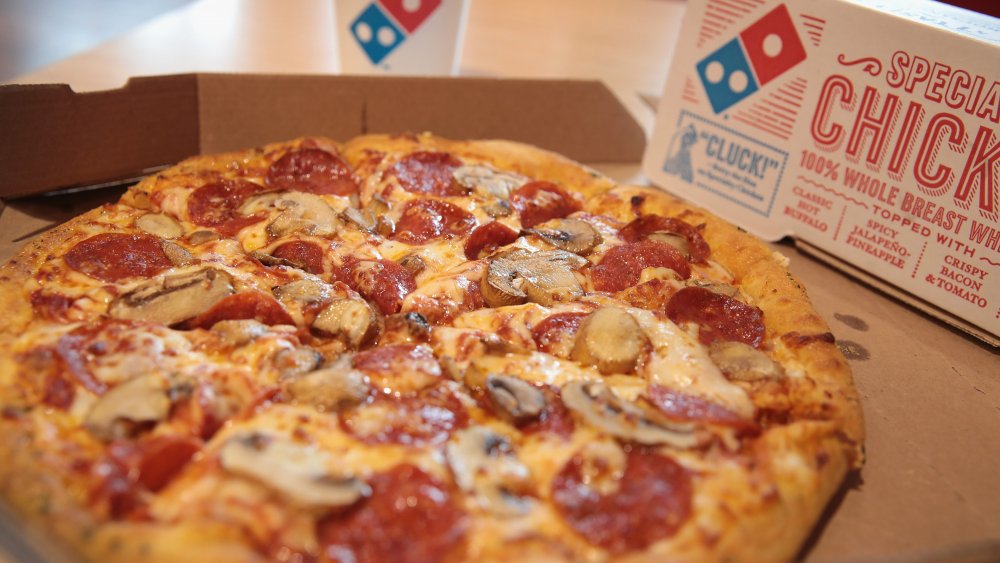Domino’s cuts rates of large pizzas by 50% to compete with smaller rivals

Domino’s cuts rates of large pizzas by 50% to compete with smaller rivals
Domino’s strategic decision to significantly reduce the prices of its large pizzas in response to the evolving dynamics of the quick-service restaurant (QSR) market in India reflects a broader trend in the fast-moving consumer goods (FMCG) sector. This trend involves local and smaller players challenging established brands and, in some cases, outperforming them in specific markets or niches.
The QSR industry in India has witnessed increased competition due to the emergence of smaller and newer rivals in the pizza segment, including Tossin, GoPizza, Leo’s Pizzeria, MojoPizza, Ovenstory, and La Pino’z. These competitors have introduced innovative offerings and pricing strategies to capture market share and cater to diverse consumer preferences.
In response to this evolving landscape and the price-sensitive nature of Indian consumers, Domino’s has opted to make a significant price reduction for its large pizzas. This move is aimed at attracting and retaining customers by providing greater value for money.
Domino’s decision to communicate this price reduction to its subscribers through messages underscores its commitment to remaining competitive and relevant in the market. Keeping customers informed about changes in pricing and promotions is a common marketing strategy to maintain and grow customer loyalty.
Overall, Domino’s price reduction in the pizza segment signifies the company’s agility and willingness to adapt to market conditions and changing consumer preferences. It’s an example of how established brands need to continuously evolve and innovate to stay competitive in an increasingly dynamic and competitive landscape.

Domino’s Pizza has taken a substantial step to make its offerings more affordable and competitive by reducing the prices of its large vegetarian and non-vegetarian pizzas. Large vegetarian pizzas, previously priced at Rs 799, are now available for Rs 499, while large non-vegetarian pizzas, formerly priced at Rs 919, can be purchased for Rs 549. This price reduction aims to make Domino’s pizzas more accessible to a wider range of customers and address the competitive challenges posed by emerging and smaller rivals in the Indian quick-service restaurant (QSR) market.
By lowering the prices of its flagship products, Domino’s intends to provide greater value for money and enhance its appeal to price-sensitive consumers. In the face of increased competition from local and smaller players, such strategic pricing adjustments can help maintain and expand the brand’s customer base.

Jubilant FoodWorks, the parent company of Domino’s Pizza, has not provided detailed comments on this strategic move, likely due to the company’s silent period ahead of quarterly results. Nevertheless, this price reduction reflects the company’s adaptability and commitment to addressing evolving market conditions and consumer preferences, which are critical factors for success in the QSR industry in India and beyond.
Jubilant FoodWorks, the parent company of Domino’s Pizza, reported a significant 74 percent year-on-year drop in net profit, amounting to Rs 28.91 crore, during the June quarter. Several factors contributed to this decline, including challenging demand conditions and intense competition within the quick-service restaurant (QSR) industry in India.
The QSR industry in India has become increasingly competitive, with established Western-style brands like Domino’s, Burger King, Pizza Hut, and KFC facing a slowdown in sales over the past three quarters. This slowdown can be attributed to heightened competition from local players and the impact of inflation on consumer preferences.
In response to these challenges, larger QSR brands are adjusting their strategies to remain competitive. Some key strategies include:
1. Price Reduction: Brands like Domino’s are reducing prices to make their products more affordable and attractive to price-conscious consumers.
2. Cost-Effective Offerings: QSR chains are introducing more cost-effective product offerings and value menus to cater to a broader customer base.
3. Expansion into Untapped Markets: Brands are expanding their presence into previously untapped cities and regions to tap into new customer segments and increase market penetration.
These strategic adjustments aim to help larger QSR brands regain momentum and maintain their market positions in the face of fierce competition from local players. It highlights the dynamic nature of the QSR industry, where companies must continuously evolve and adapt to changing market conditions and consumer preferences to stay relevant and competitive.
Pizza Hut, owned by Yum Brands, is adopting a strategic approach to expand its presence in the Indian market. To target markets with a population of over one million, the company is actively focusing on its expansion efforts. Additionally, Pizza Hut has implemented a price reduction strategy for its “flavour fun” range, now priced at Rs 79, down from its previous price of Rs 200. These measures are aimed at enhancing the brand’s competitiveness in a market that has become increasingly crowded and competitive.
The Indian pizza market has seen a surge in competition, with regional chains accounting for nearly 30 percent of all pizza outlets. Home-grown brands like La Pino’z have experienced rapid growth, more than doubling their store count in just three years.
By lowering prices and targeting markets with a sizable population, Pizza Hut aims to remain competitive and attract a wider customer base. These strategies are in line with the broader trend in the quick-service restaurant (QSR) industry in India, where established brands are adjusting their pricing and expansion strategies to address increased competition from local players.
In this highly cluttered market, QSR chains are employing various tactics, including price reductions, cost-effective product offerings, and targeted expansion, to maintain their market positions and appeal to price-conscious consumers. These efforts reflect the dynamic and evolving nature of the QSR industry in India, where brands must adapt to changing market conditions and consumer preferences to thrive in a competitive landscape.




